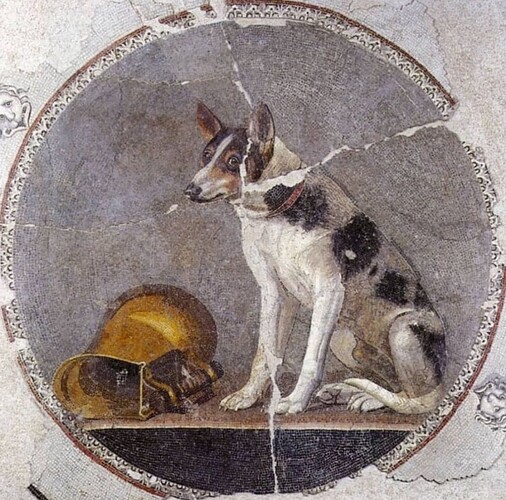This ancient floor mosaic, dating back around 2,000 years to the era of 200-150 BC in Egypt, showcases a scene featuring a dog and an overturned gold vessel, often used for storing wine or water. Interestingly, it portrays the familiar canine expression of mischief or guilt, a timeless aspect of human-animal connections echoing across ancient times.
Discovered on the grounds of the Great Library of Alexandria, this mosaic offers a glimpse into a remarkable center of knowledge and scholarship. At its peak, the library housed an impressive collection of 400,000 scrolls, preserving the invaluable works of eminent figures like Plato and Socrates.
The fate of the Great Library remains a subject of historical debate. During the Siege of Alexandria in 48 BC, Julius Caesar reportedly set fire to Egyptian ships, inadvertently causing some damage to parts of the library. However, the main building survived and was reconstructed after the conflict.
Contrary to popular belief, the library’s decline was not solely due to one catastrophic event but rather a gradual deterioration over several centuries. Factors such as funding shortages, intellectual suppression, and the impact of Roman rule contributed to its eventual demise by 640 AD.

